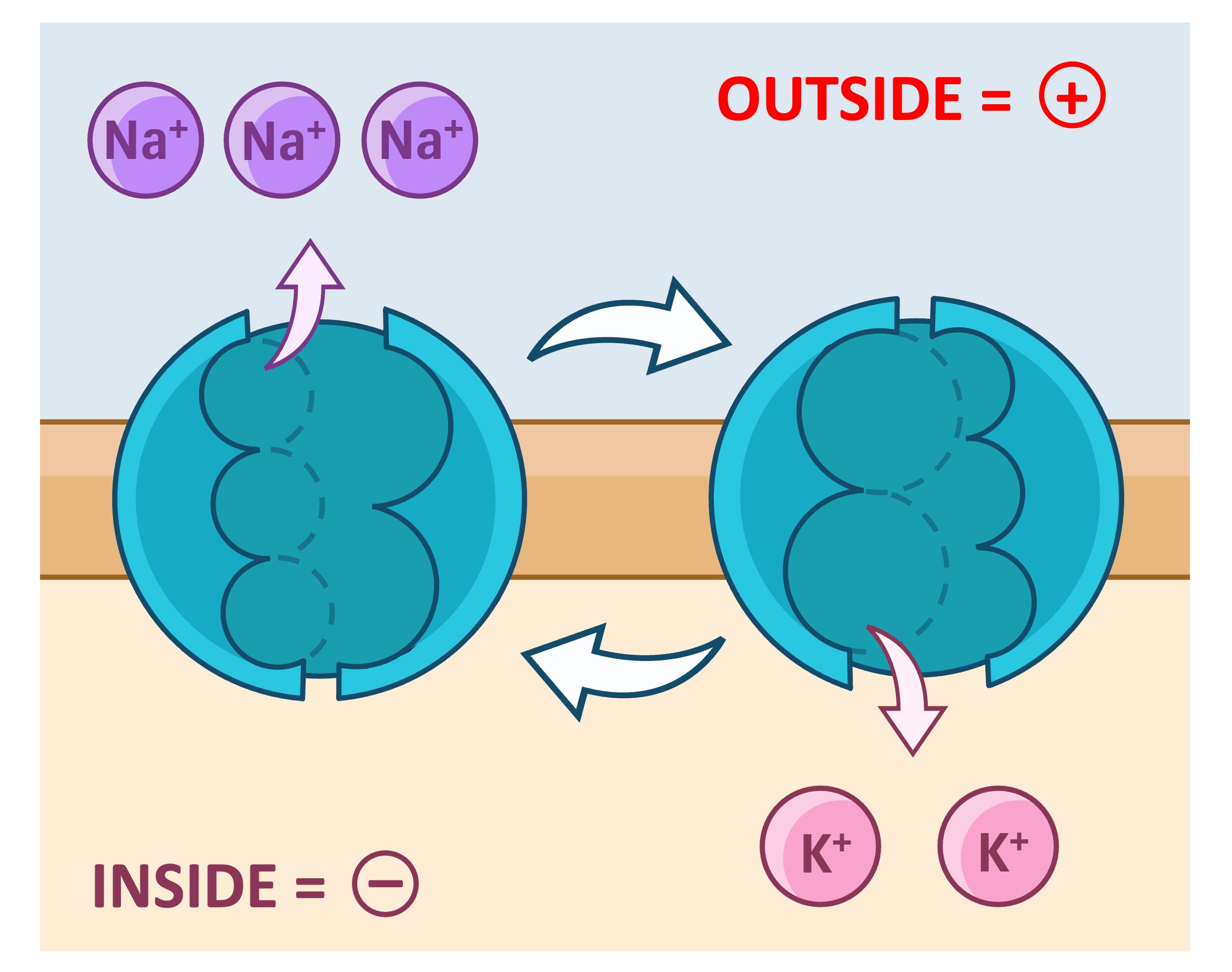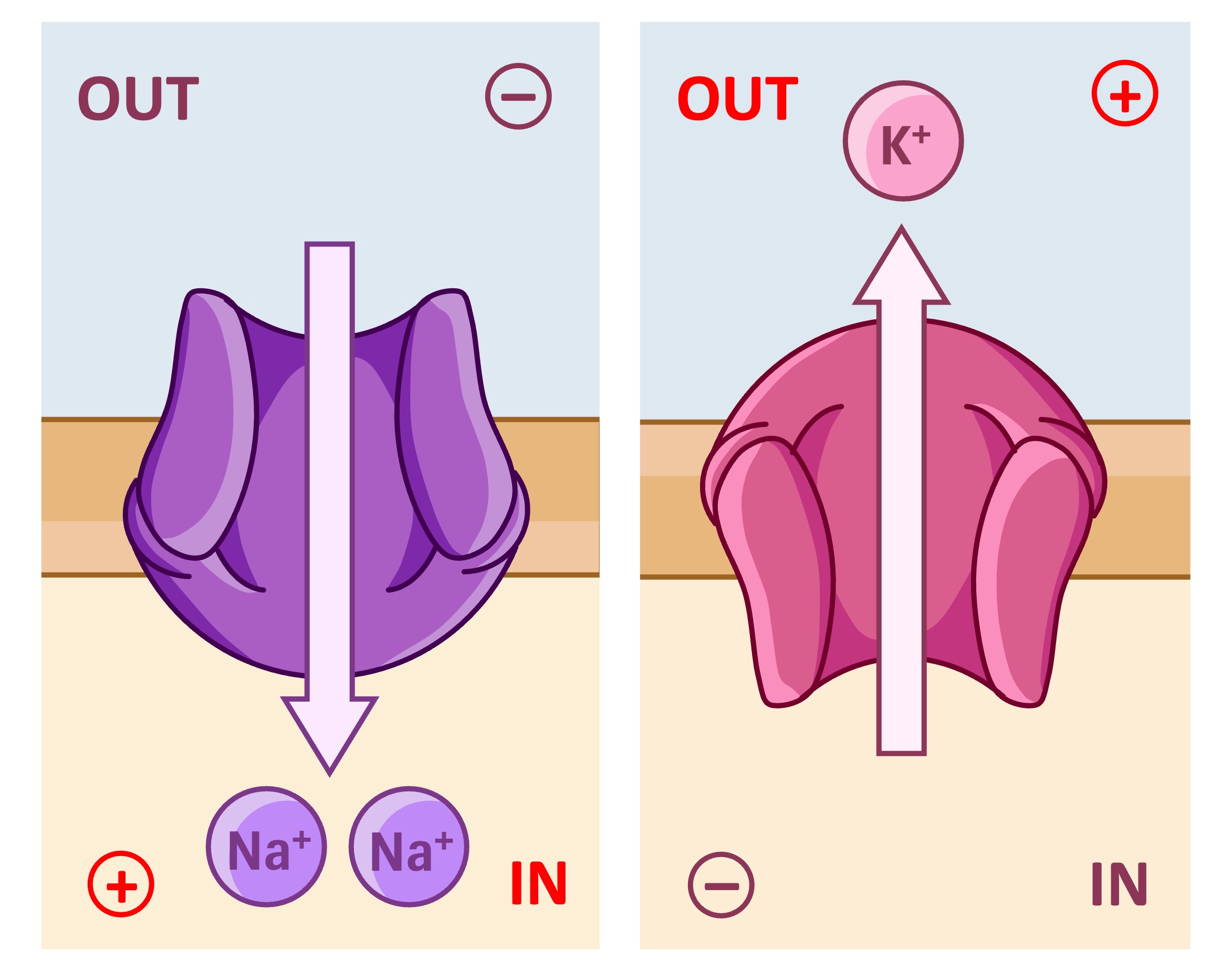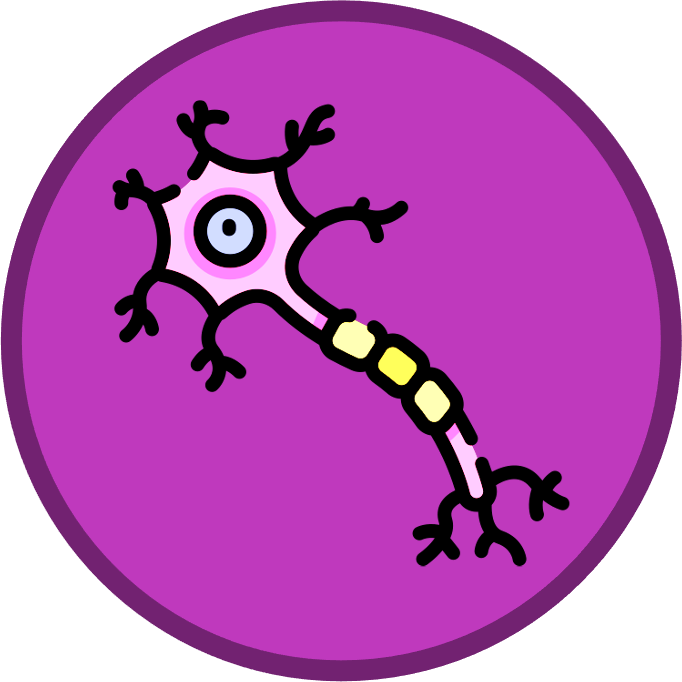

Nerve Impulses
Nerve impulses are caused by the movement of ions which trigger changes in the membrane potential of nerve cells (neurons)
-
An impulse will occur when the membrane potential is changed from a resting potential to an action potential
Resting Potential
-
When a neuron is not sending an impulse, sodium-potassium pumps maintain a resting potential of –70mV
-
These pumps use active transport to shuttle three sodium ions outside of the cell for every two potassium ions internalised
-
This creates a difference in charge across the membrane, with the inside being negative relative to the outside

Action Potential
-
Neurons fire when ion channels change the resting potential into an action potential (roughly +30mV)
-
An action potential will only occur if an external stimulus triggers a sufficient change in membrane polarity (threshold potential = –55mV)
-
Action potentials consist of intervals of depolarisation followed by repolarisation:
-
Depolarisation – Voltage-gated sodium channels open and the influx of sodium ions makes the membrane potential more positive
-
Repolarisation – Potassium channels then open and the efflux of potassium ions returns the membrane potential to a negative value
-
-
After each action potential, the resting potential must be re-established by sodium-potassium pumps before the neuron can fire agan (refractory period)
Stages of a Nerve Impulse

Resting Potential

Action Potential
Impulse Propagation
The sodium and potassium channels along an axon are voltage-gated and open when a threshold potential is reached (–55mV)
-
A change in voltage in one segment of an axon will trigger the opening of ion channels in the next segment of the axon
-
This causes the action potential to be propagated along the length of an axon in a unidirectional wave
Because a resting potential must be re-established before another action potential can occur, nerve impulses can only be transmitted in a single direction
-
The initial stimulus for the opening of channels originates in the dendrites, so nerve impulses are transmitted from dendrites to axon terminals




